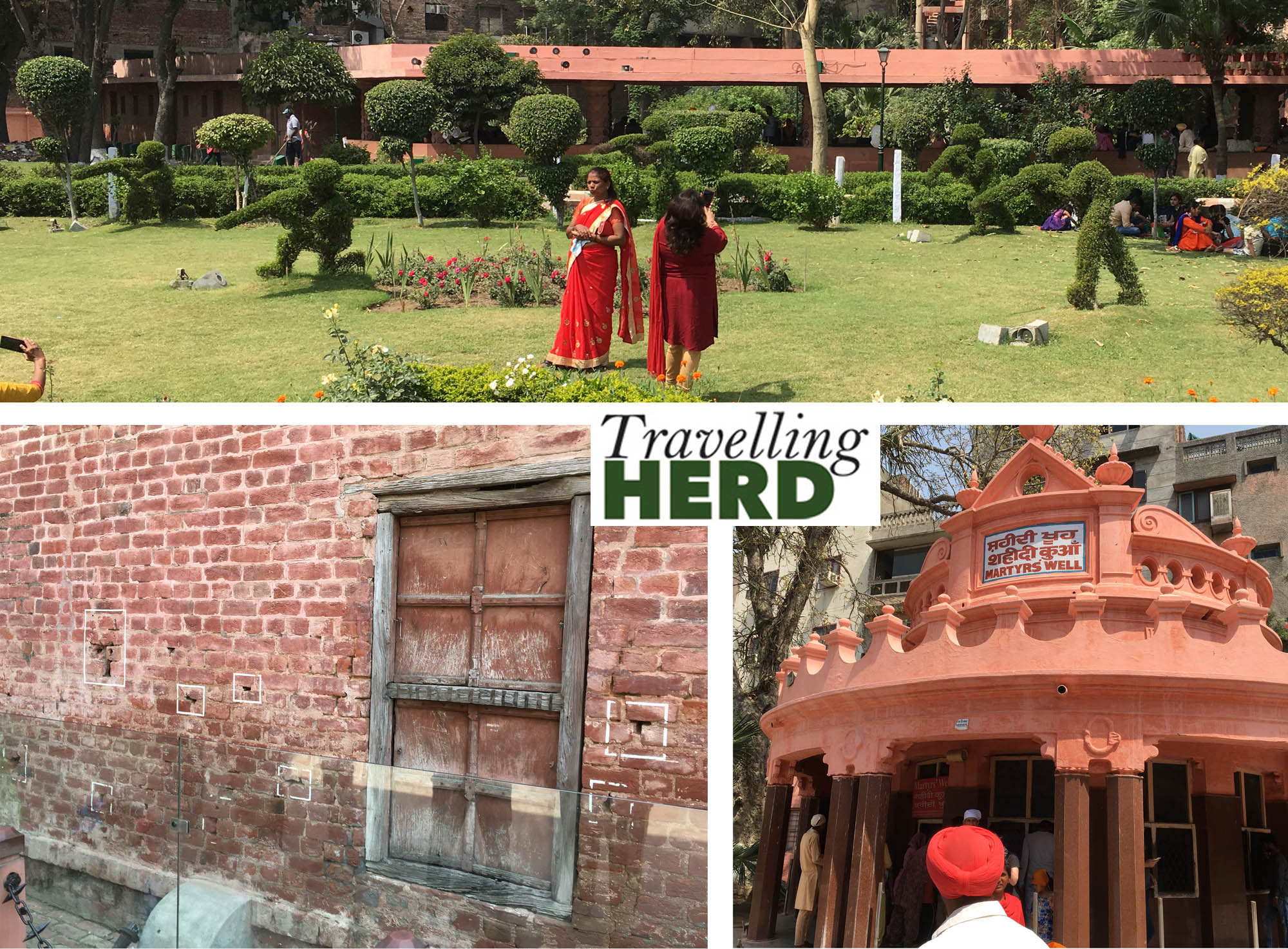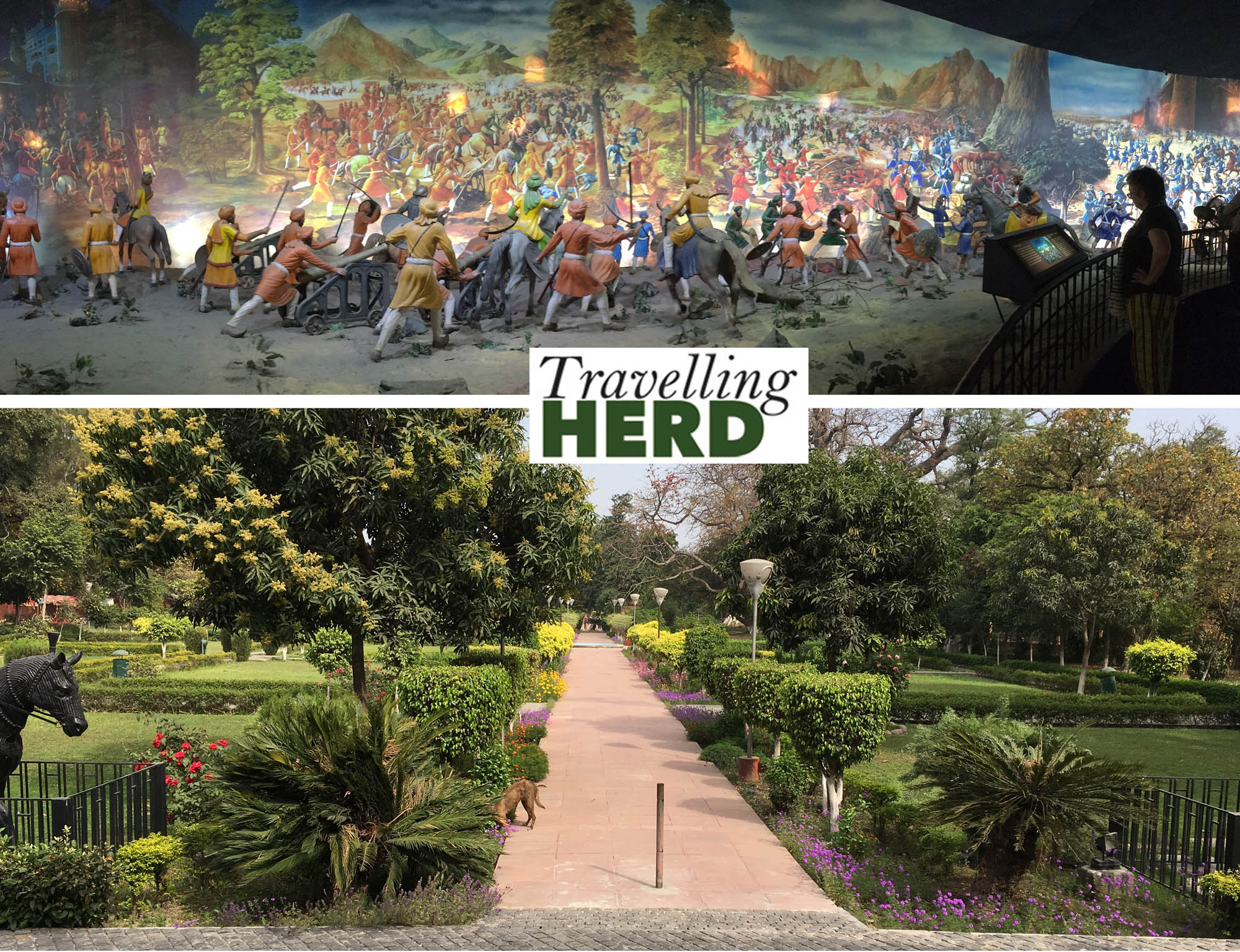Thursday 4th April 2019 – Afternoon
Jallianwala Bagh is close to the Golden Temple and was the scene of an infamous and bloody massacre, on 13 April 1919 by British troops under the command of General Dyer, of unarmed Indian men, women and children who were gathered in a walled garden to celebrate a festival. Many were killed or wounded and others jumped into an open well [below, bottom right] to escape the firing and were drowned. The bullet marks are still visible on the walls [below, bottom left] and it is said that this horrific and unjustifiable incident was a deciding factor in hastening the end of British rule in India.
Strangely, this is a calm and tranquil park, as it must surely have been on the day of the massacre before the troops arrived. The topiary provides an ingenious and poignant commemoration of the event, using organic natural forms to create figures of firing and advancing soldiers.

Robert had identified the Maharajah Ranjit Singh Panorama museum as somewhere he wanted to visit. Our guide was obviously nonplussed by this request but took us there nonetheless. It was not at all what we had expected but the formal gardens are well-tended and lush. Inside the building there are various tableaux of important events in the Maharajah’s life, with sound effects playing. Work is underway to restore the nearby palace and this looks as though it will be well worth a visit when it is completed.

From here we drove to Wagah-Attari, the last check point on the India/Pakistan border, to watch a lowering of the flags ceremony. This has been enacted almost daily since 1959 and is a strange and unique hybrid of the changing of the guards; Monty Python’s Ministry of Silly Walks; the ceremonial New Zealand haka and the sounding of The Last Post crossed with a “Strictly” dance-off. Watch the video to see just what this means.

A stadium has been built on each side of the border and people on both sides are encouraged to express their nationalistic fervour. Perhaps the strangest thing is that this highly choreographed event is exactly mirrored in Pakistan and India and so must have been developed in partnership by two nations who are linked in many ways by blood and culture but are now divided by history and disagree about so many other things.
Video of the afternoon:
Current Route Map:

Distance travelled so far:
By Air to Delhi: 4,187miles
By 18 trains to Amritsar: 4,392miles
Selfie of the morning:






